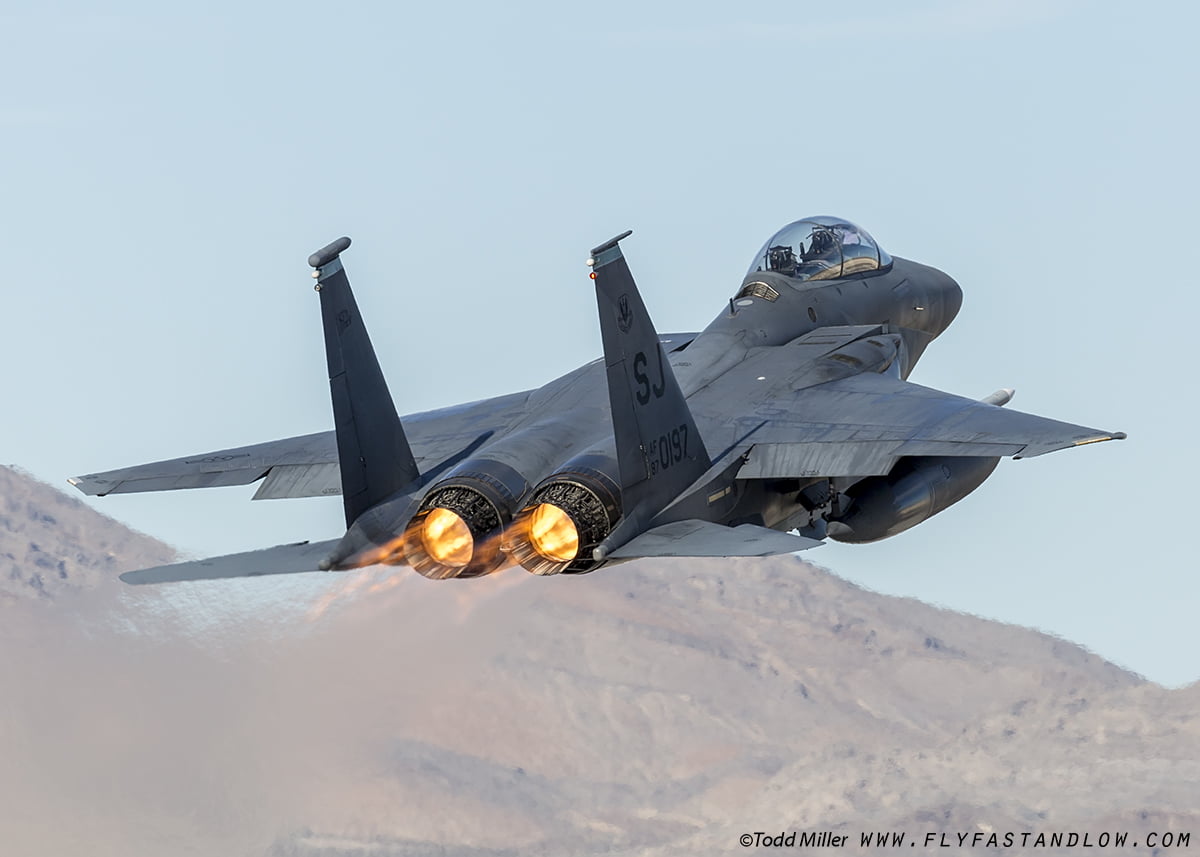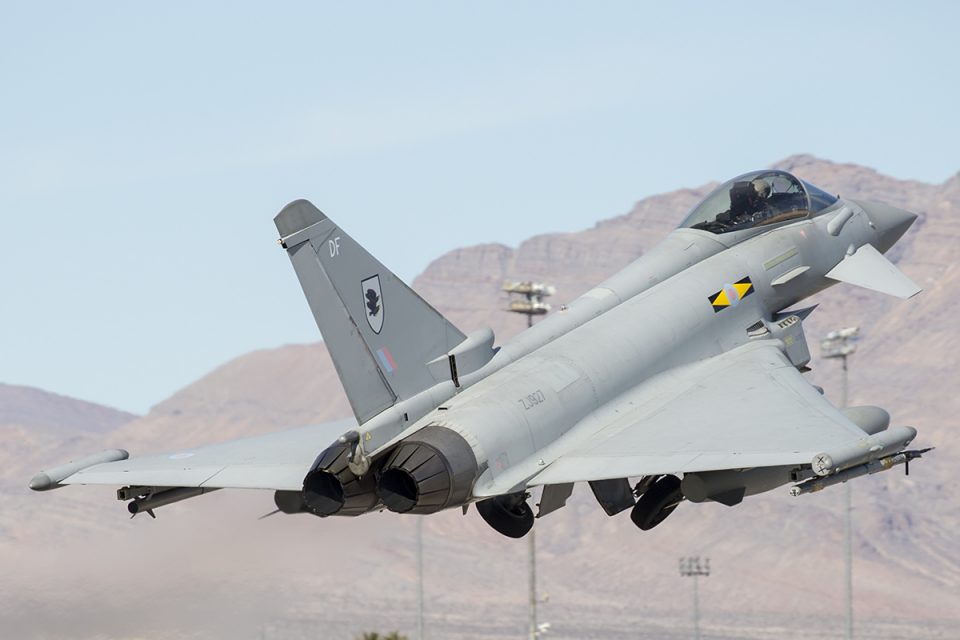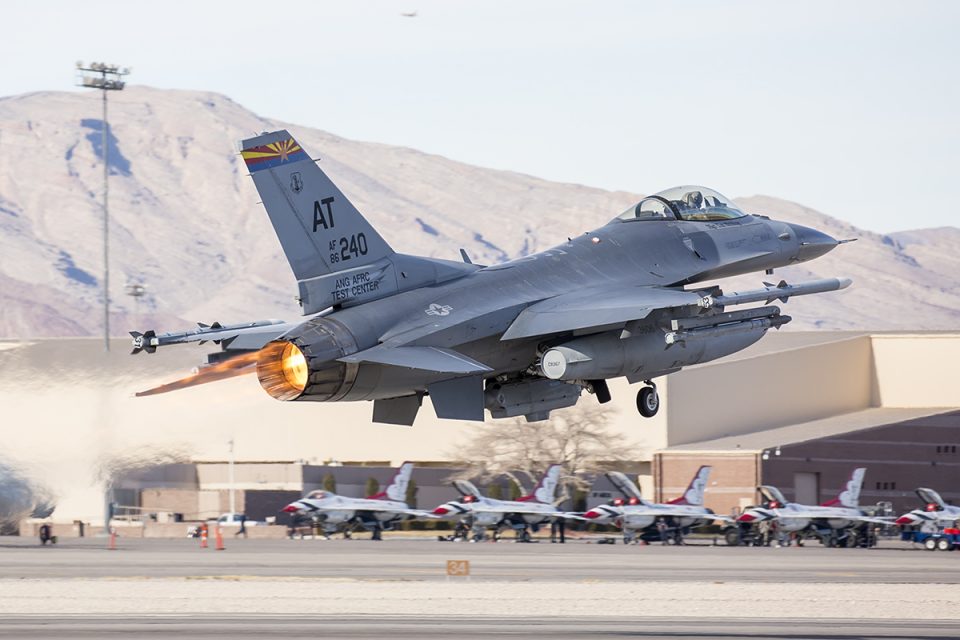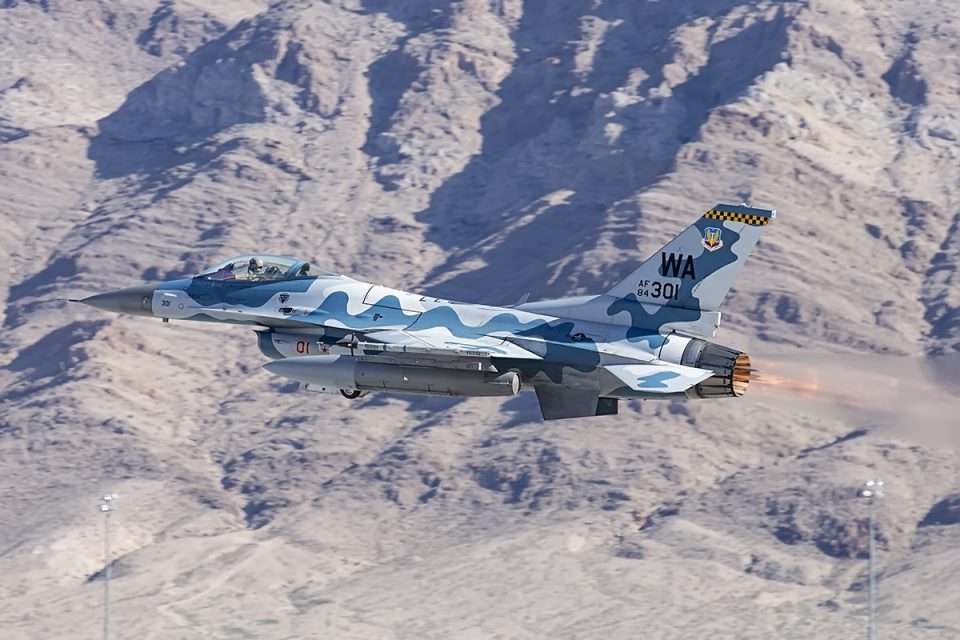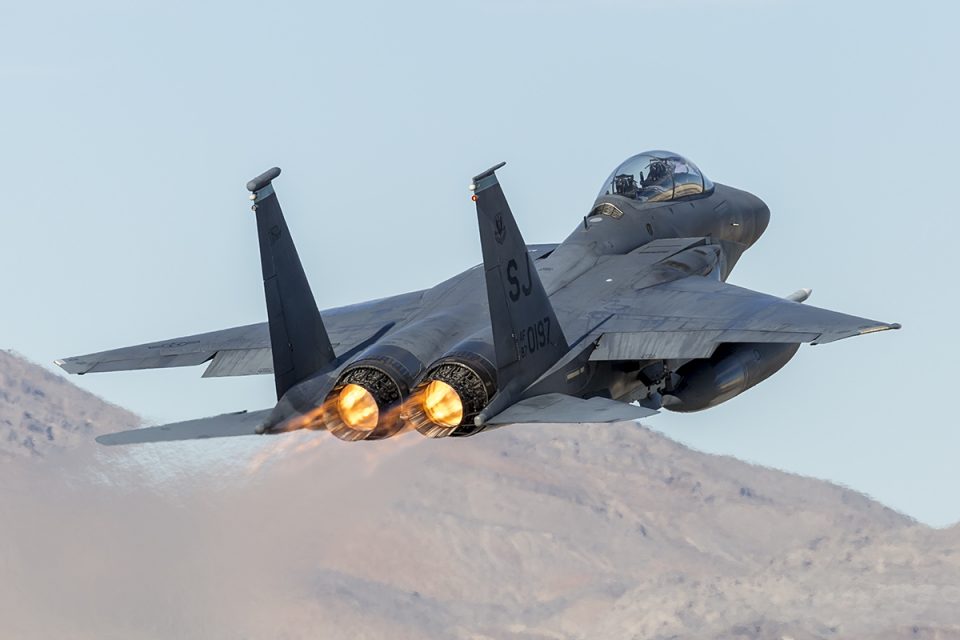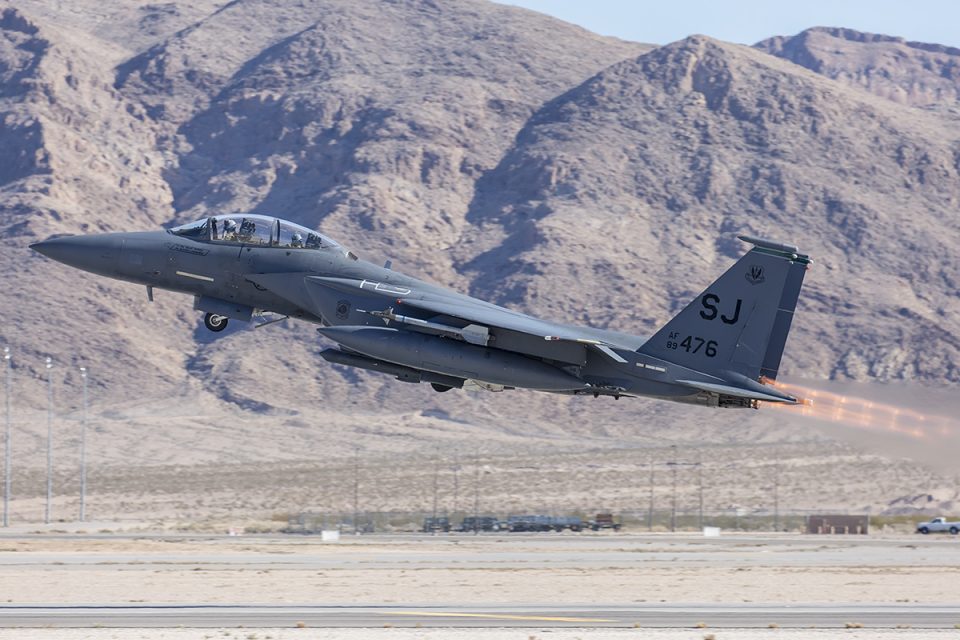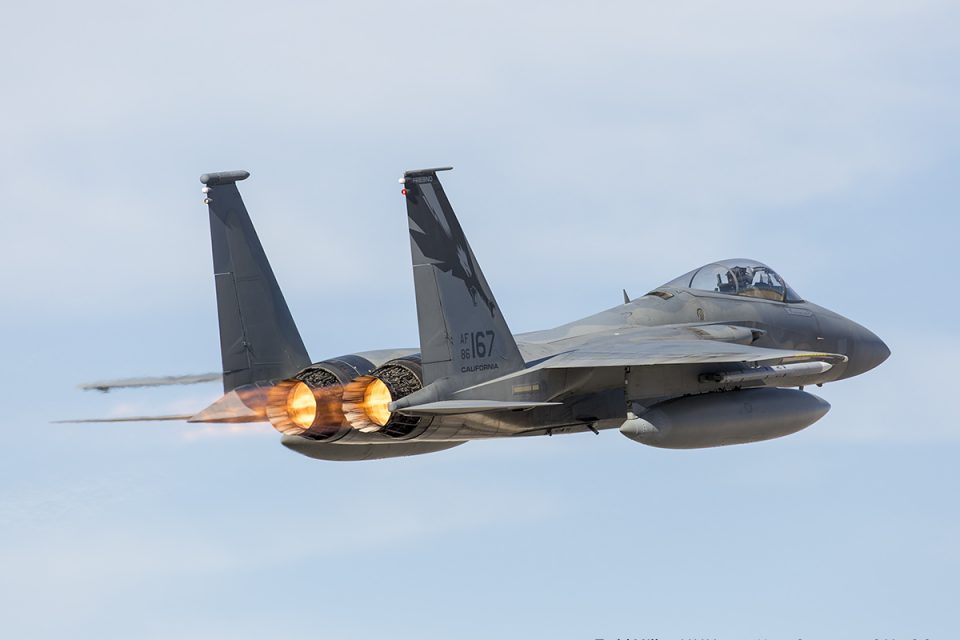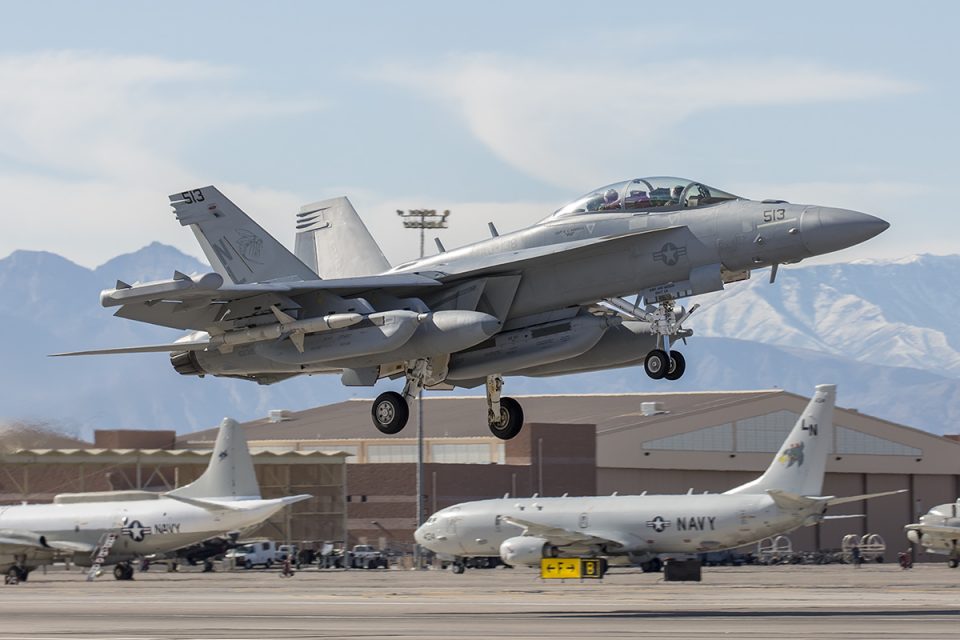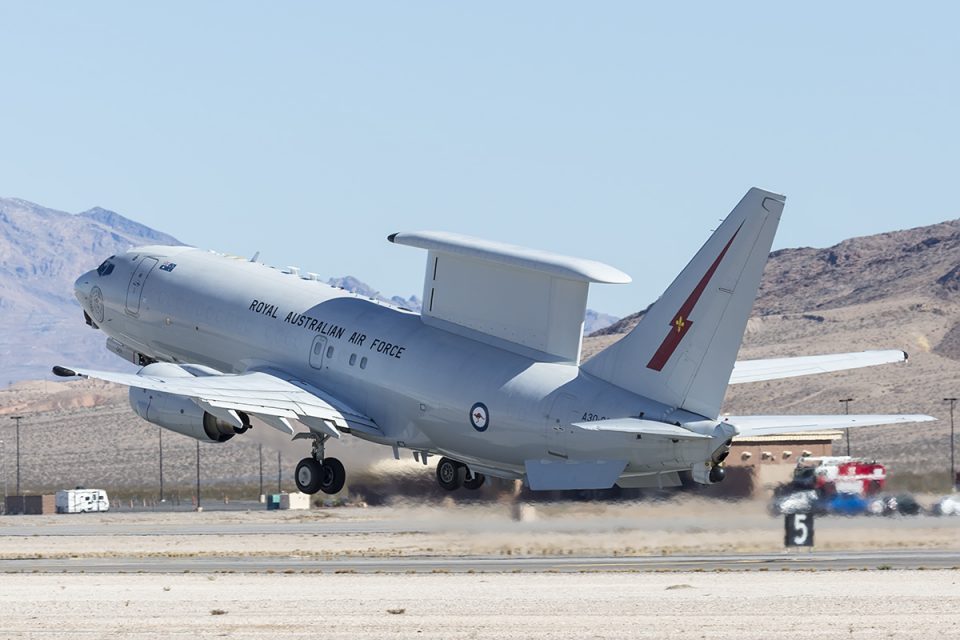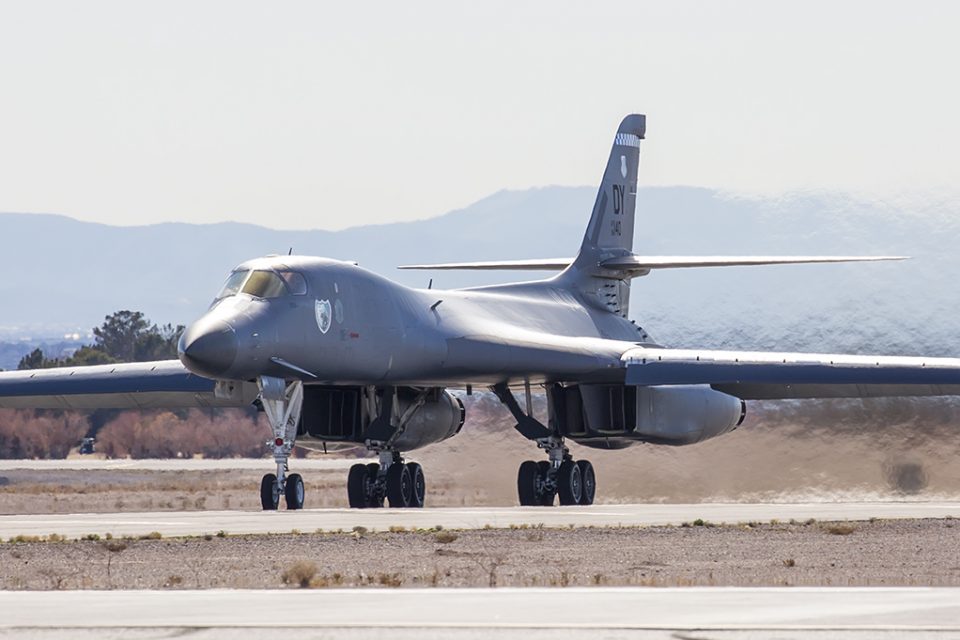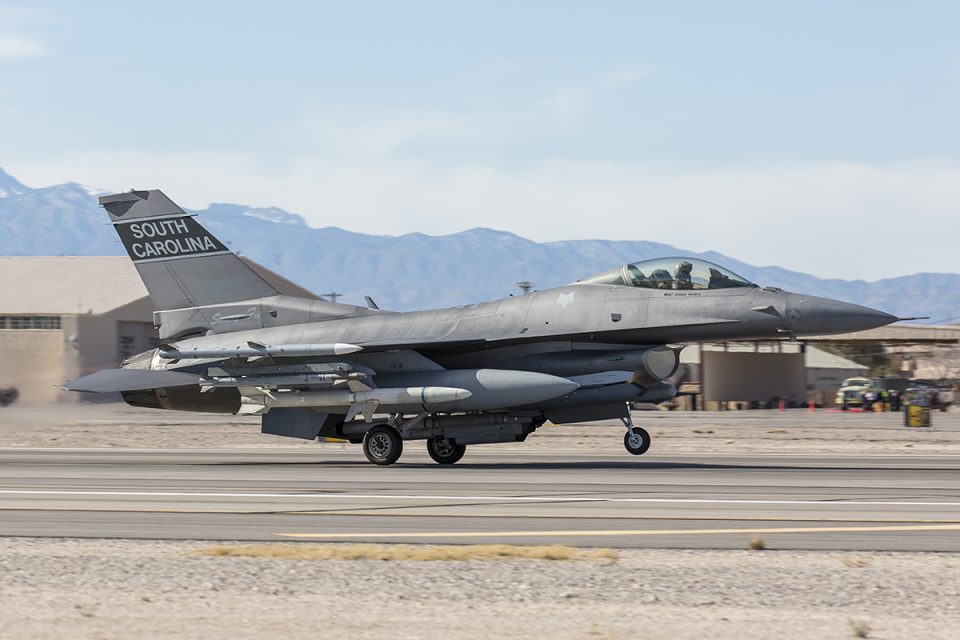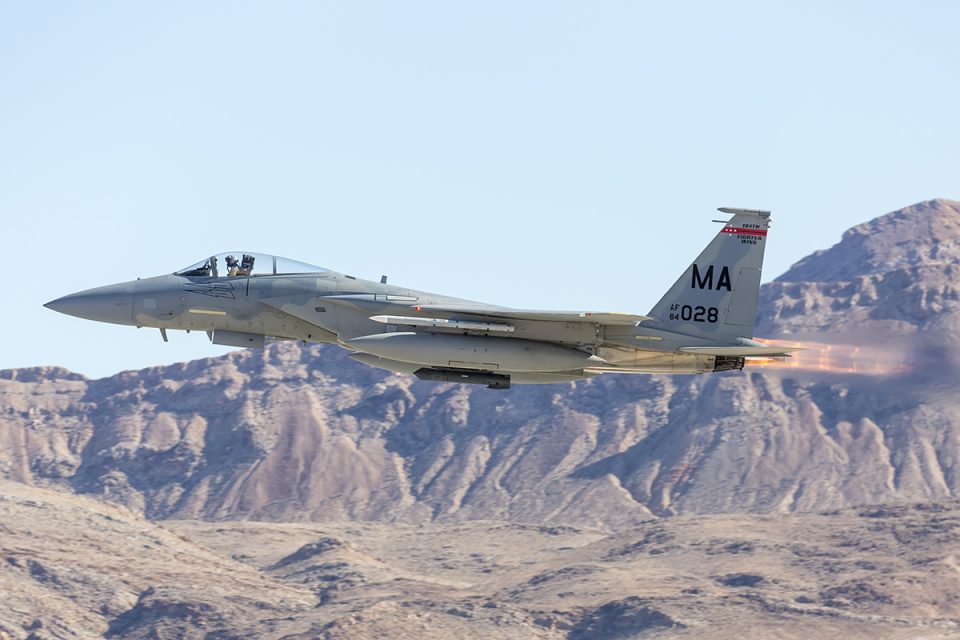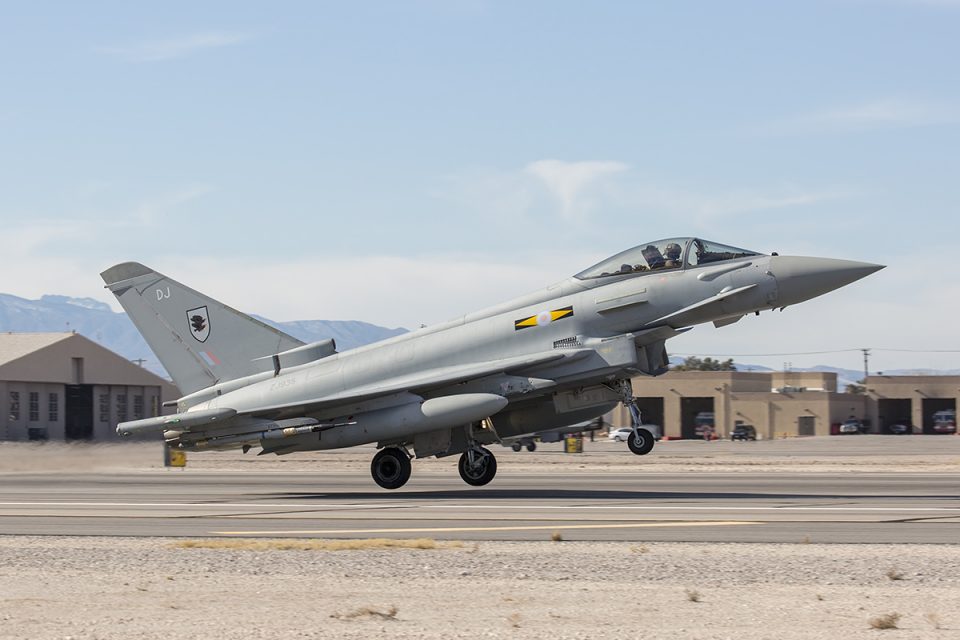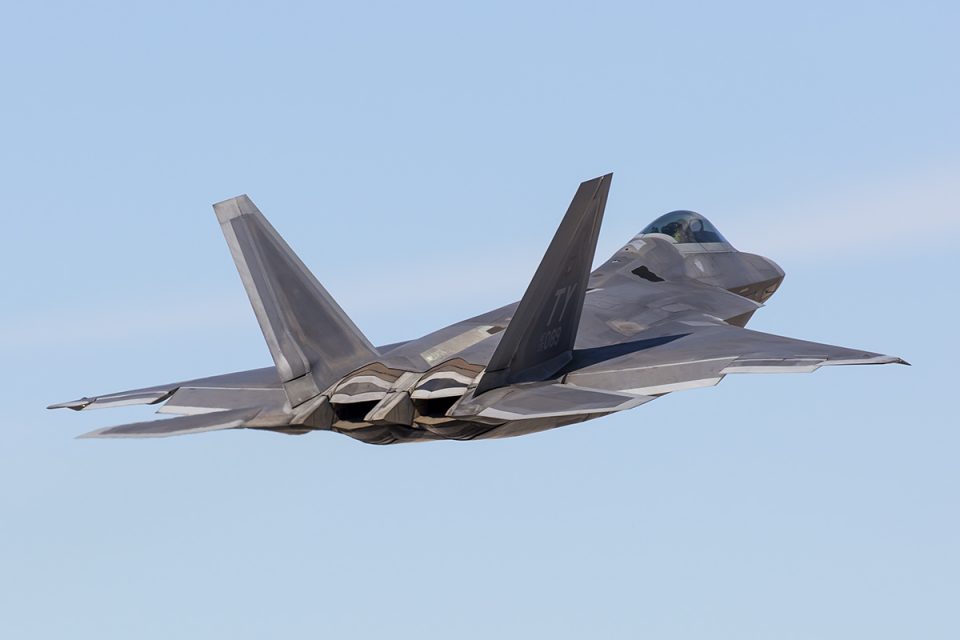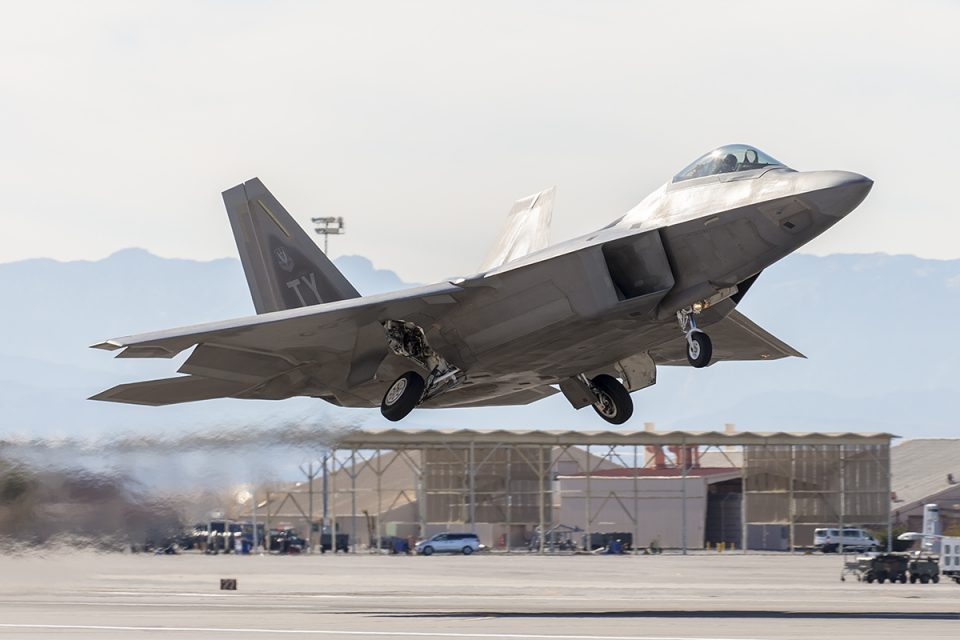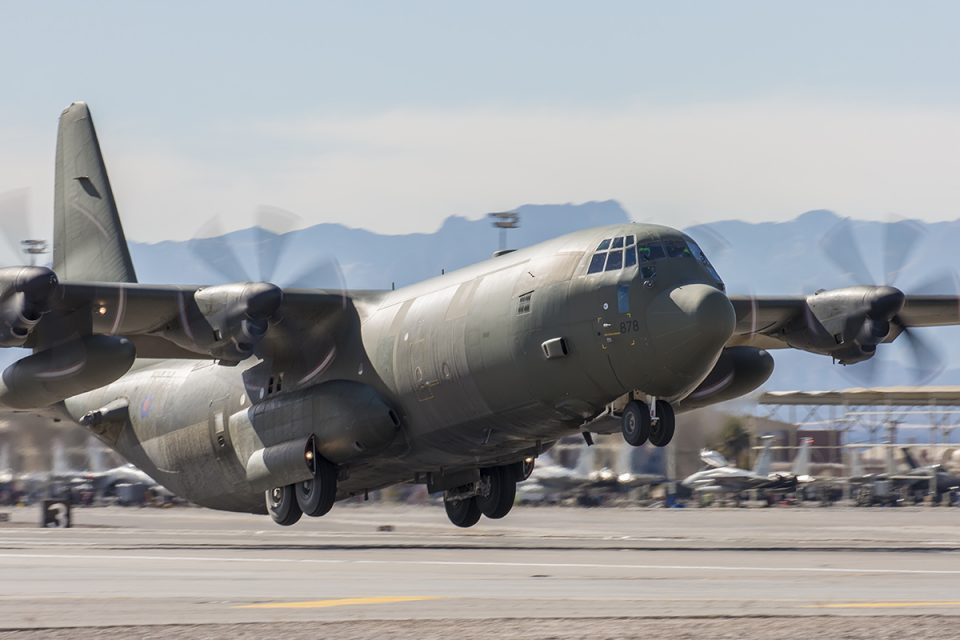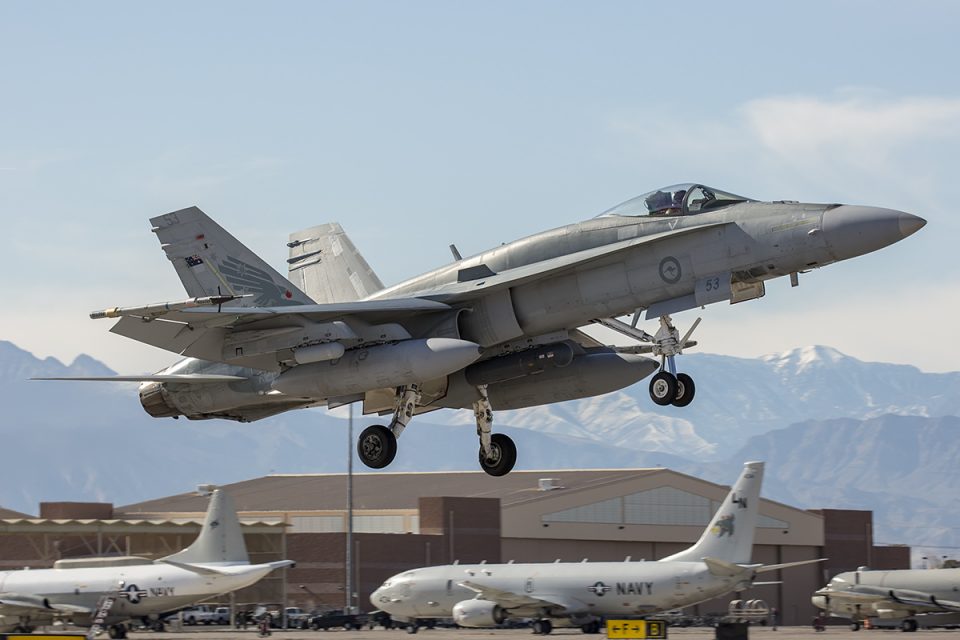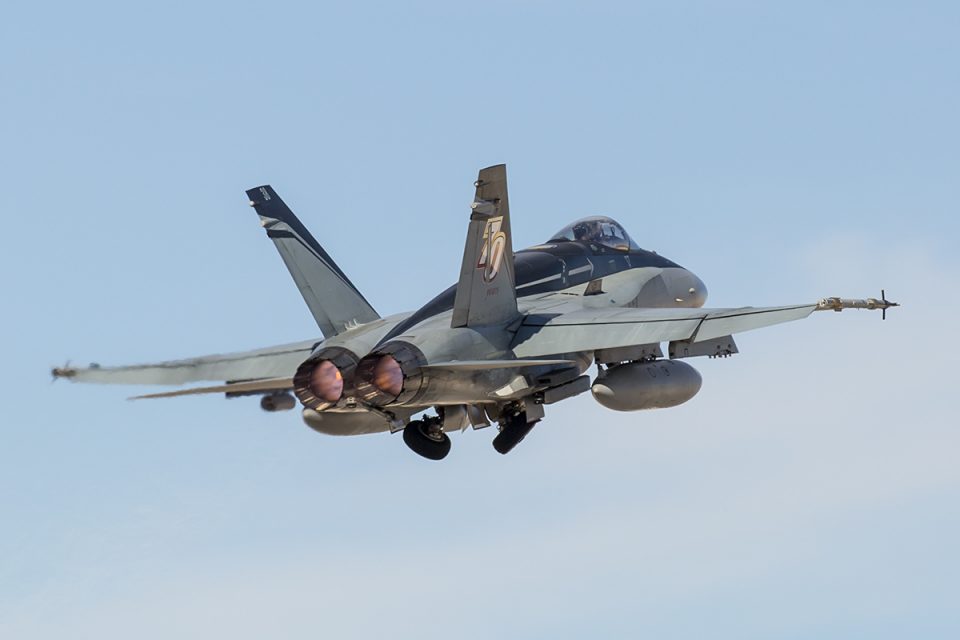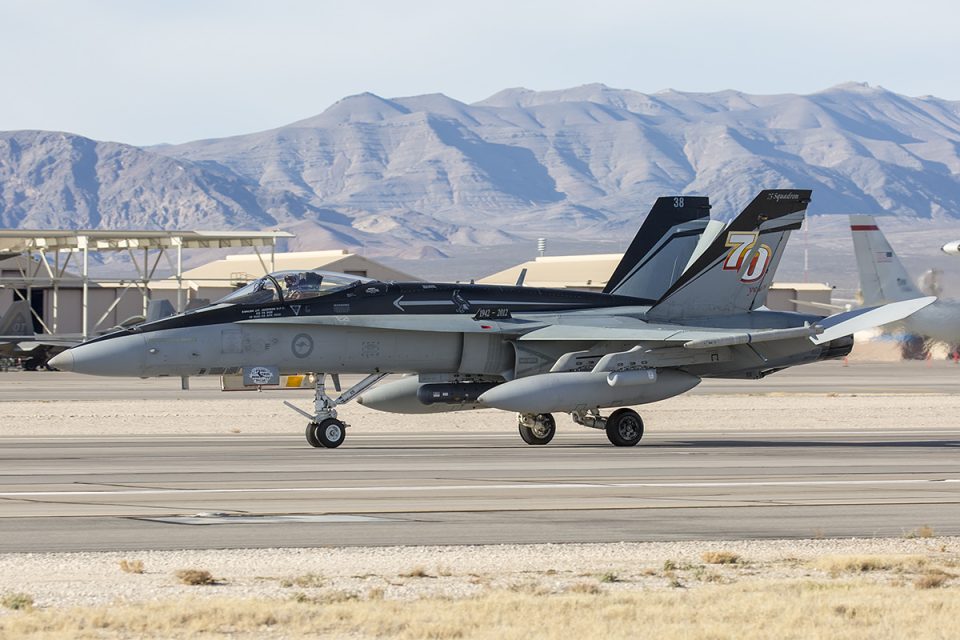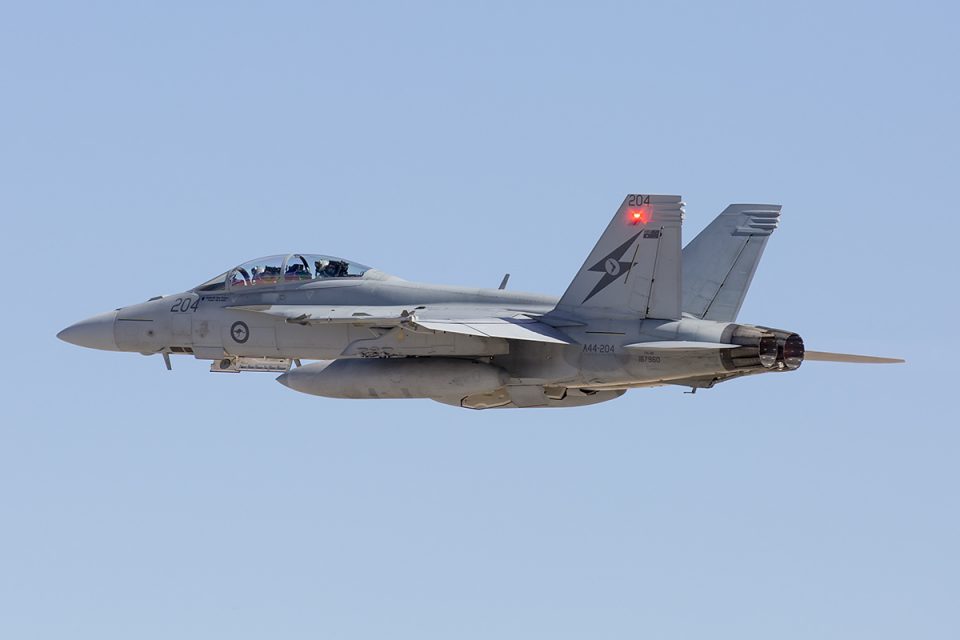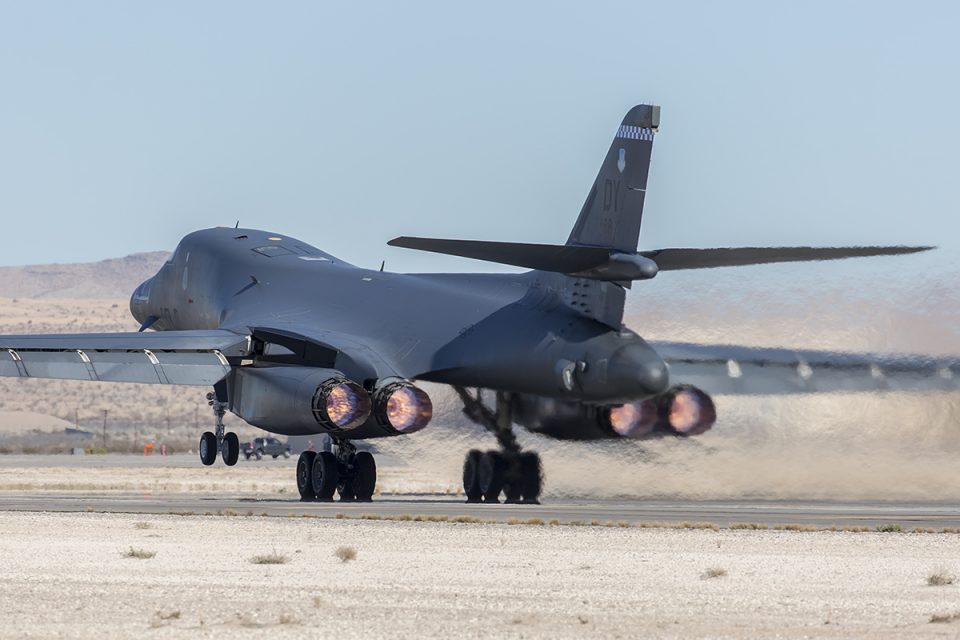2016-02-18 By Todd Miller
Three weeks of intensive Red Flag aerial warfighting culminated 2-12-16.
This first of four Red Flag exercises to be held in 2016 featured 39 units, 120 aircraft and 2400 personnel from three countries, the United States, United Kingdom, and Australia.
Group Captain Philip Gordon, Air Expeditionary Wing Vice Commander, Royal Australian Air Force (RAAF) noted that a very real portion of the exercise for the RAAF was the deployment from Australia to Nellis AFB Las Vegas, NV.
The RAAF deployment of 400 personnel, 14 aircraft and all required support equipment took one week with stops in Guam and Hawaii.
The deployment was supported by the RAAF C-17 and KC-30A refueling tanker and the group was proud to have departed and arrived on time.
Such an effort by Australia represents a very successful force projection halfway around the world.
The exercise also gave the RAAF an opportunity to deploy the legacy F/A-18As and the F/A-18Fs side by side in a combat environment.
Exercise Red Flag 16-1 Concludes from SldInfo.com on Vimeo.
Col. Kenny Smith, Commander of the 57th OG noted great value for participants to understand the unique capabilities of each unit (F-22A, F-16CJ, RAAF F/A-18F, E-3G B40/45, E-7A etc), and collaborate as a team.
Nationalities and specific unit identities quickly go by the wayside as participants gel into an integrated “Blue Force.”
From day one of the exercise, the learning curve is steep.
Red Air threats are fully integrated and the entire adversary force thinks and adapts. It is an intense and very unforgiving environment by design, and if Blue air is not fully integrated, they will take losses.
This is the entire purpose of Red Flag, the best lessons are learned from experience and this ensures they are learned before they are in theater in a real conflict.
New air combat capabilities are changing the face of the air battle, and the participating Air Forces are adapting their tactics to utilize their assets more effectively.
The RAAF F/A-18F Super Hornets AESA radar adds enhanced capabilities that make the aircraft and the Blue force more effective.
The wide variety of sensors combined with the stealth of the F-22A provide an unparalleled ability to gather and fuse information and create an effective picture of what is happening upfront in the battle space.
These capabilities enable Raptor pilots to function as battle managers, passing information to other platforms and as such becoming force multipliers.
The amount of information from Intelligence, Surveillance, and Reconnaissance (ISR) assets, Drones, and Sensor laden aircraft (RC-135s, U-2, P-8, P-3C, E-7A, E-3G & others) is significant and must be assessed and directed effectively.
It is about the parsing of information to support an effective combat force; not just collecting vast amounts of information.
The opportunity to deploy these assets side by side “in theatre” and learn how best to utilize is unrivaled.
1st Lt. 1st Lt. Emily Lebeau, 965th Airborne Air Control Squadron air battle manager (Tinker AFB, OK) noted that her unit had deployed the vastly improved E-3G Block 40/45 aboard its AWACS (its second Red Flag appearance) to manage the airspace and provide the big picture in support of the F-22As and other assets.
The technology leap from 1970’s technology to current is significant and represents quite a steep learning curve as well.
Given Red air regenerates after being killed, there is a continuous and ongoing Red air threat for the 90-minute exercise window (Red Flag consists of two 90-minute exercise windows one at night, one at day each day during the 3-week exercise).
Group Captain Philip Gordon, AEW VC RAAF noted the need to manage the battle with available weapons resources.
While the F-22As may appear to be the obvious choice to eliminate the air threats, they only carry 6 AMRAAMS.
As a result, battle managers on the “networked” Blue Force determine the best asset to engage the threat. Real time information and target data is communicated to the designated asset to engage.
In many cases, AMRAAMS are “fired” (simulated) from an F/A-18 or F-15E on a strike mission (exiting the range after attacking their target) an F-16CJ on a SEAD mission or from another platform – preserving AMRAAMS on the F-22 for other uses.
There is no question that the advanced capabilities of the F-22A, the incoming F-35, the E-3G, E-7A, F/A-18F, EA-18G and other platforms are changing the face of aerial warfare.
Utilized effectively, the integrated team approach enhances the capability of the “Blue” combat force. Red Flag ensures all operators are well prepared to achieve greater effectiveness from day one of any conflict.
Editor’s Note: Todd Miller is an avid photographer and contributor to a number of Aviation media groups. Utilizing www.flyfastandlow.com as a personal “runway” it is Todd’s goal to reflect the rapidly evolving capability of the military aviation mission, as well as the character and commitment of the military aviation professional.
Todd Miller wishes to thank MSgt S. Allen, SrA T. Spangler and the entire 99th ABW Public Affairs team for support during his visit to Red Flag 16-1.


